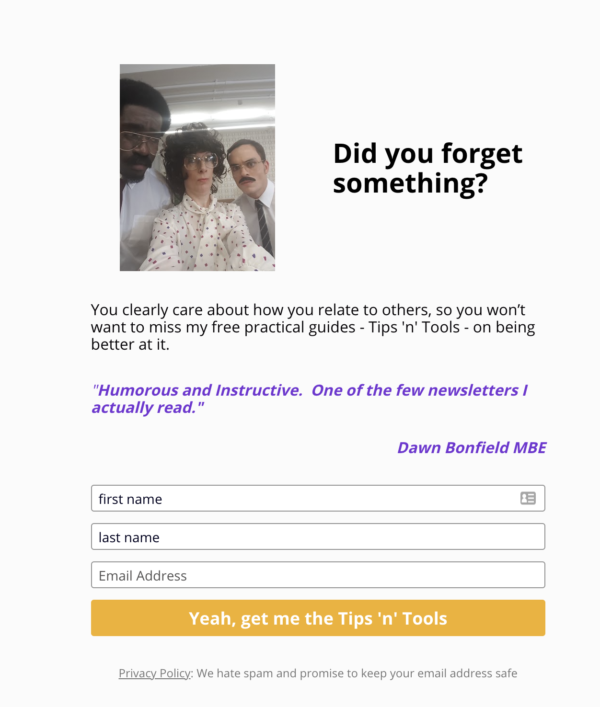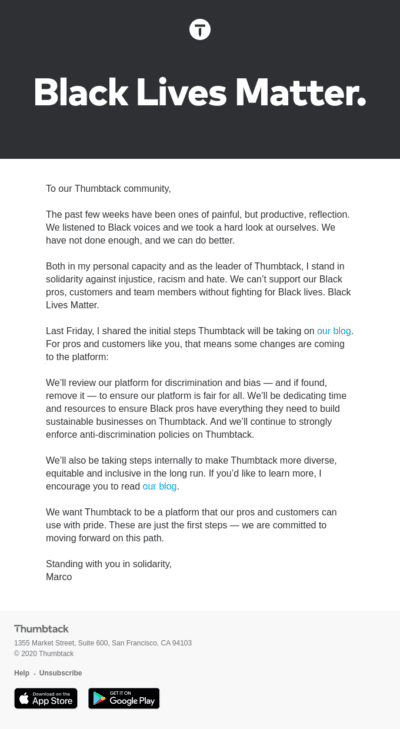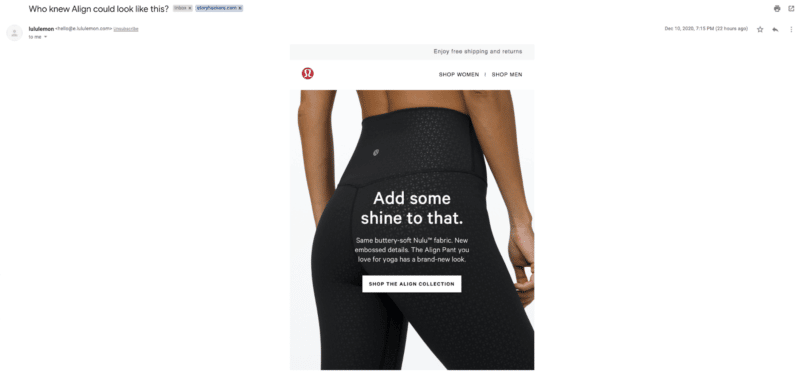As a consequence of increased levels of anxiety surrounding a range of health and economic stressors due to the COVID-19 pandemic, peoples’ attention spans are, unfortunately, wearing thin. So, given the current circumstances, your business needs to have good manners when engaging in email marketing.
Undoubtedly one of the biggest challenges in maintaining this “good behavior ” is that it’s completely subjective and entirely in the eye of the beholder. In fact, research from McKinsey & Company, a global management consulting firm, suggests that there’s a high degree of variance in consumer sentiment and behaviors around the world. People have vastly different perspectives when it comes to essential purchases, brand loyalty, and desires to resume activities outside of the home.
It’s challenging making educated guesses about your subscribers’ needs and preferences right now; however, the following tips will help you maintain a higher level of email etiquette during difficult times.
1. Be mindful of compliance and privacy
Compliance laws matter. Beyond providing guidelines — and mandating fines for violations — these legal protections are all about respecting peoples’ privacy and space. Demonstrating a level of respect for compliancy is a sign of being a good brand, which your customers and prospects will value.
This resource can help you identify the first steps you need to take. As you get started, here are a few considerations to think about.
- Relevant laws. Know what laws and privacy frameworks are applicable to your business. Examples include the General Data Protection Regulation (GDPR), the California Consumer Privacy Act (CCPA), and the Controlling the Assault of Non-Solicited Pornography And Marketing (CAN-SPAM) Act. Depending on your business’s location and industry, there may be additional applicable laws and regulations.
- Opt-in processes. Create an opt-in process that enables new subscribers to give their consent to receiving communication from your company. Email marketing is a permissioned channel, meaning that your audiences need to sign up to hear from you.
- Opt-out processes. Creating an opt-out process is just as important as an opt-in message. According to some laws, a business needs to provide a straightforward pathway for audiences to unsubscribe. The GDPR, for instance, gives people the right to be forgotten from a company’s marketing database.
The key is to weave these recommendations into a user-friendly experience that sets expectations, like the following example from Frankie Kemp, a communications coach and consultant.
This opt-in form is compelling because it:
- Communicates a value proposition.
- Collects minimal information.
- Includes an easily accessible link to a privacy policy.
- Humanizes the privacy statement with a comment about spam and keeping email addresses safe.

2. Ensure a mobile-first experience
The pandemic has resulted in a growing number of people spending more time on their smartphones and mobile devices to access digital services.
- Around the world, mobile usage is up an average of one hour per day since the start of the pandemic.
- Mobile ad engagement has increased 15% during the pandemic.
- 37% of U.S. adults said they were more interested in mobile app shopping than they were last year.
“And data is showing that these trends won’t be reversing anytime soon,” wrote Megan DeGruttola for Stackla. “To succeed in this post-pandemic world, brands will need to understand and adapt to these new and lasting shifts in consumer behavior.”
Mobile-friendly etiquette involves writing less copy, saying more in fewer words, and making it easy to reply — by text message or phone call, if possible. Also keep in mind that your recipient may be in an unpredictable environment. Emails need to be straightforward to read, use minimal bandwidth to load, and articulate every key message with clarity.
For inspiration, take a look at this email from Moment, the publisher for the RTRO app. The ad for the app is easy to scan and understand; and makes downloading it effortless with one click into the app store.

3. Be inviting rather than high pressure
Research from EY found that 27% of consumers are planning deep cuts to their budgets while 35% are planning to save. A large part of this group comes from older adults over the age of 45 who’ve experienced job loss.
Within this particular context, good email etiquette means understanding that a sales pitch may come across as demoralizing for a person with limited funds. One simple solution is to adjust your communications to be welcoming rather than high pressure.
One example is this email marketing campaign from Ritual. By using the messaging “Ready When You Are,” as well as offering a 50% off discount that recipients can use now or later, the vitamin company has created a completely pressure-free campaign.

4. Add an extra dose of kindness to your recipient’s inbox
Especially given overwhelming bad news, negativity in the media, and loneliness due to global quarantines, even a small amount of kindness matters. In your emails, there are some subtle ways to demonstrate kindness in your communication:
- Say “thank you.”
- Use visuals or images of people to communicate a broader theme of humanity.
- Include your recipient by speaking to that individual’s involvement.
“As we are trying to cope with and recover from the COVID-19 pandemic, we are acutely aware how acts of kindness have the ability to inspire, deepen our solidarity, and unlock our shared humanity,” wrote Mura Ghosh, academic librarian for the University of London.
Take a look at the following from the nonprofit Charity: Water, which successfully uses these “kindness” concepts in a “Thank You” email that celebrates giving.

5. Embrace the “give before you get” mindset
When you send an email to a subscriber list, you are asking for their time, energy, and attention. So when writing emails, good email etiquette is about communicating a story that people will enjoy.
A study of 7,000 New York Times articles found that “stories carrying emotions — anger, awe, anxiety, and surprise — got 34% more shares, and those with positive emotions performed best of all,” explained author and book writing coach Bill Birchard in an article for the Harvard Business Review.
One way to embrace the “give before you get” mindset in your marketing emails is to share a narrative that recipients are likely to enjoy. For instance, take a look at the following email campaign from cycling clothing retailer Rapha.
Instead of pitching its products, the company sent a photo that tells the story of its brand through experiencing a beautiful landscape and being human.

6. Approach problems with a helpful attitude
If one of your customers is experiencing an issue, stay positive and helpful. For a friction-heavy process like diagnosing a billing issue, people are likely to feel frustrated.
A valuable email etiquette rule, in these situations, is to make the troubleshooting process as easy as possible for the person receiving your message. The following example from Benchmark Email marketing group does a great job with it’s problem solving-style of communication.
This type of message is likely to leave a positive impression with your recipient, who may have been unaware of the billing issue. Proper etiquette means working through the problem rather than escalating the issue by, say, terminating someone’s user account.
Be patient. People could use a little extra support, rather than frustration, right now.

7. Be mindful of weekends
These days, people need their weekends more than ever to relax and decompress, and business emails may be unwelcome or considered spammy.
Research has consistently shown that the best time to send an email is during weekdays when people are engaged with their inboxes while at work. But there have also been studies pointing to higher click and open rates for weekend newsletter campaigns — likely due to fewer emails being sent.
While there are no defined etiquette rules surrounding weekend email outreach, it’s important to pay attention to the way that your recipients respond. After all, good email etiquette is about listening and learning. There are a few steps that you can take to ensure that recipients value your communication:
- Check whether unsubscribe rates and spam reports increase over the weekend.
- See what happens after an email reaches a recipient’s email inbox. Do subscribers take action on campaign CTAs?
- Conduct a quick sentiment analysis on social media channels like Twitter by doing a quick search for your brand. Are people complaining publicly about your communication?
- Make sure that your message is aligned with a weekend-oriented theme, like the example from Alternative Apparel, below.

8. Speak up about social issues
Etiquette is about saying something rather than staying silent.
Today’s consumers expect brands to form a stance on topics related to Black Lives Matter movement, LGBTQ rights, immigration reform, and the #MeToo movement. A recent report from eMarketer found that 68% of consumers say brands have an important role to play to speak out against racial inequality and injustice.
Business communication needs to acknowledge the greater needs of society. In the eMarketer report, 67% of respondents reported that they would be more likely to support brands that take meaningful action around racial inequality and the Black Lives Matter movement than just making posts.
In 2020, communities around the world experienced social unrest that is unlikely to stop. A valuable step your brand can take, both with email and social media, is to contribute to these discussions.
To write effective emails about social issues, pay attention to the following guidelines:
- Acknowledge the pain that people are feeling.
- Understand that your recipient list may have varied perspectives on the topic.
- Avoid pitching or selling products with this type of content.
- Ensure that your business emails represent your brand in a truthful matter; don’t oversell promises or tout a track record that you cannot stand behind.
- Recognize that there’s room for deep, heartfelt emotion in professional emails like the example from Thumbtack, below.

9. Connect your subject line with newsletter content
How would you feel if you were invited to a costume party, only to realize when you arrive that the attire was formal?
Your email subject line creates a level of expectation with your reader. When recipients scan their inboxes, they choose what to read, categorizing something as spam, deleting, or flagging for later. As you know, time is a valuable, finite, and scarce resource. Being respectful in your email marketing means empathizing with your reader’s experience and being straightforward in your communication.
Luckily, it’s possible to be straightforward and creative.
For inspiration, take a look at the following email marketing campaign for Lululemon’s Align, a product line made from a special type of fabric.
Before opening the email, readers can already guess the type of content inside. And loyal Lululemon customers, especially those with a track record of purchasing Align products, are likely to find the subject line catchy. In case you can’t read it, the subject line says, “Who knew Align could look like this?”

Last but not least
Recognize that even subtle details about your business emails matter. All of the above examples communicate a certain amount of respect for every recipient. The emails are well planned, demonstrate thoughtfulness in their design, and share valuable information.
After creating your perfect, etiquette-adhering email, don’t let your hard work take a backseat to sloppy, avoidable mistakes. Before you send every email, double-check the following:
- You’ve addressed your email to the correct recipient.
- There are no grammatical errors.
- Your punctuation is on point.
Keep in mind that a poorly worded email may flag an email provider’s spam detection filter. High-quality emails aren’t just good for humans — bots are paying attention too, and are ready as the first line of defense against spam.
When it comes to sending emails, manners matter. While there are no established standards for proper etiquette, an unspoken rule is to put your recipient first.














